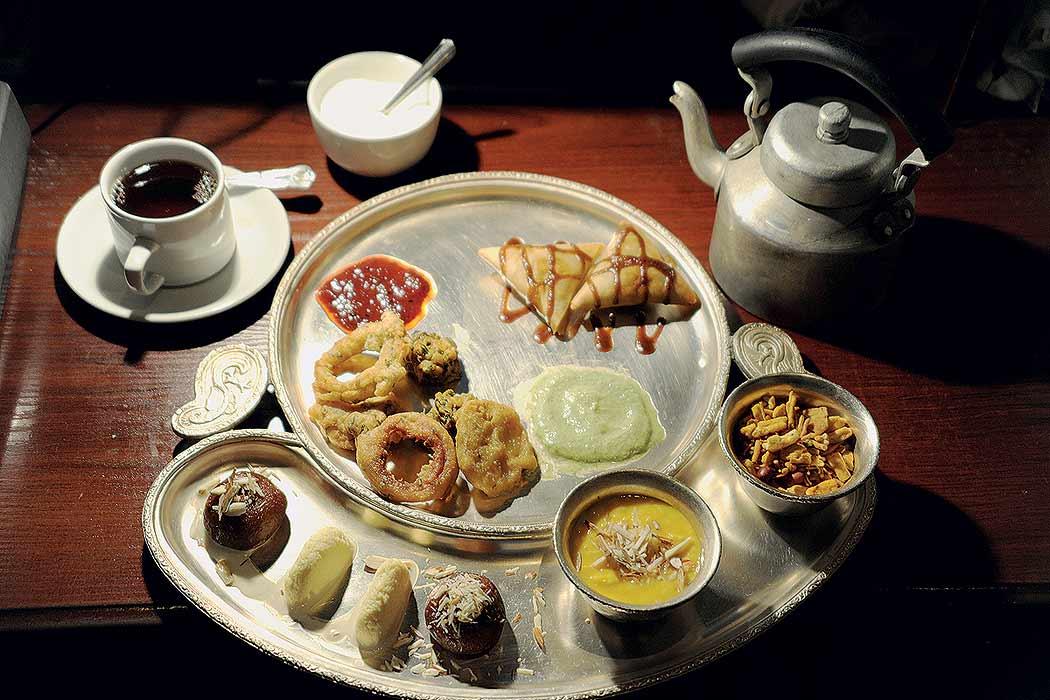
This artistically styled ethnic tray at Chor Bizarre restaurant in London, showcases some Indian savouries and cuisine that typically go with the vigorous strength of Indian Chai. Chor Bizarre serves a high-tea menu every afternoon when it becomes "Chai Bizarre", with desserts that are paired with different varieties of tea.
(From the book Chai: The Experience of Indian Tea, by Rekha Sarin and Rajan Kapoor; Published by Niyogi Books; Price Rs 1,995)
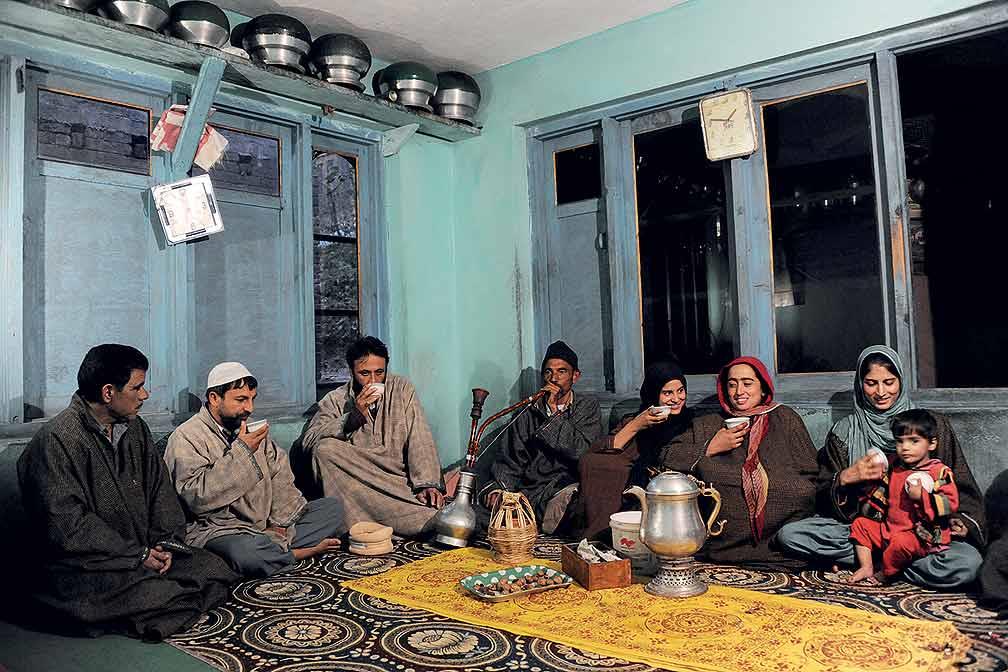
Delights in a Kashmiri home. Nothing is more relaxing than a hookah and a sip of kahwa tea with the family. In the centre stands an engraved samovar to keep the brew warm.
(From the book Chai: The Experience of Indian Tea, by Rekha Sarin and Rajan Kapoor; Published by Niyogi Books; Price Rs 1,995)
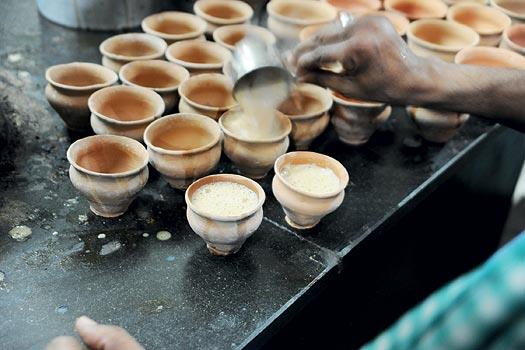
Roadside tea in Kolkata served in kullads, the unglazed terracotta cups that can be thrown away after use. Clay handicrafts are a part of local culture.
(From the book Chai: The Experience of Indian Tea, by Rekha Sarin and Rajan Kapoor; Published by Niyogi Books; Price Rs 1,995)
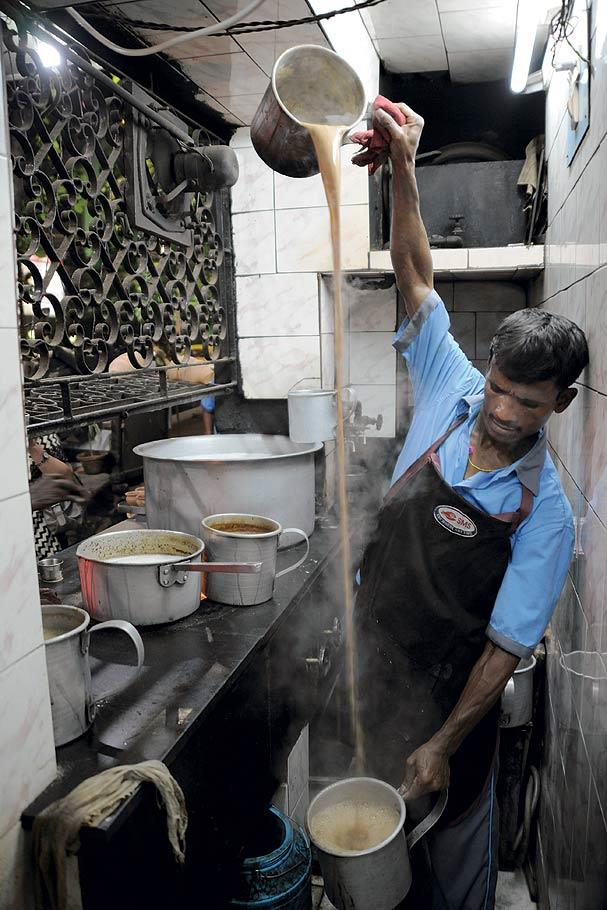
The chaiwallah pours tea from one pan to another in long movements to give the brew a frothy head.
(From the book Chai: The Experience of Indian Tea, by Rekha Sarin and Rajan Kapoor; Published by Niyogi Books; Price Rs 1,995)
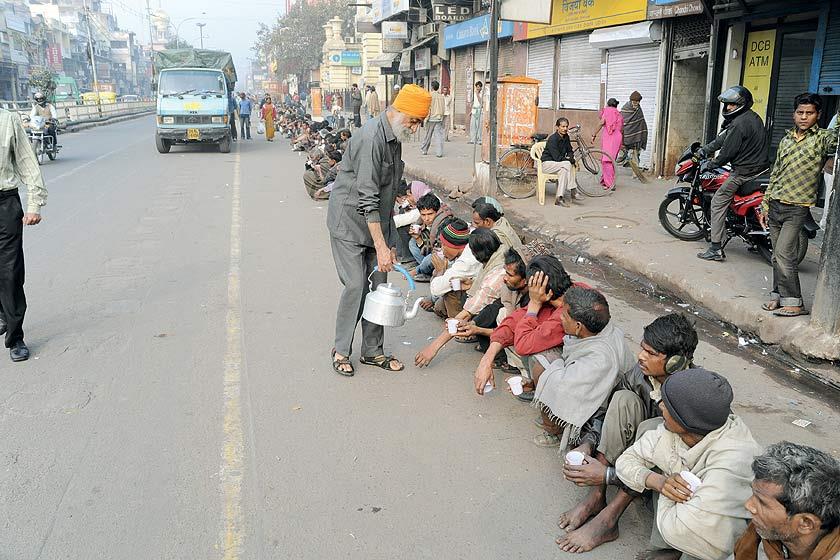
A member of the Sikh community doles out early morning tea to labourers, in Chandni Chowk, Old Delhi.
(From the book Chai: The Experience of Indian Tea, by Rekha Sarin and Rajan Kapoor; Published by Niyogi Books; Price Rs 1,995)
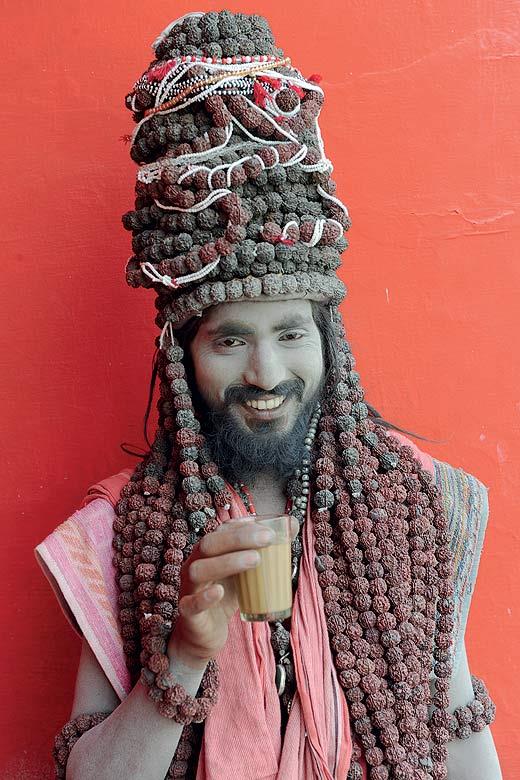
A Hindu sadhu at the momentous Ardh Kumbh Mela in Haridwar pauses to take a dhaba chai and pose for the camera.
(From the book Chai: The Experience of Indian Tea, by Rekha Sarin and Rajan Kapoor; Published by Niyogi Books; Price Rs 1,995)
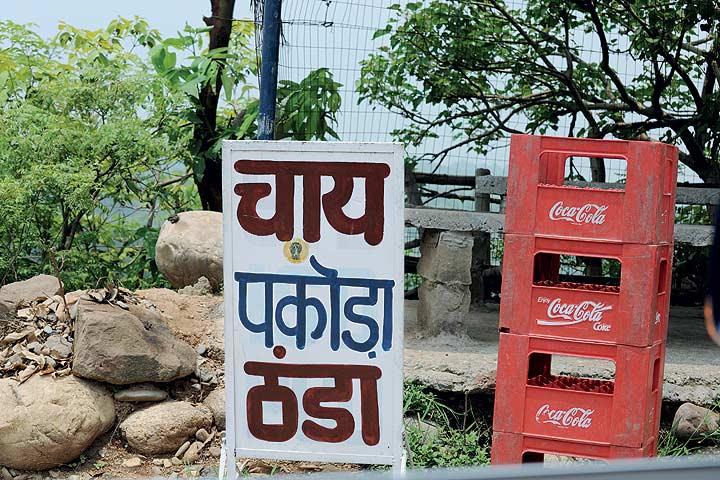
The roadside signboard translates the dynamism of India, where the popularity of tea vies with the cola culture.
(From the book Chai: The Experience of Indian Tea, by Rekha Sarin and Rajan Kapoor; Published by Niyogi Books; Price Rs 1,995)
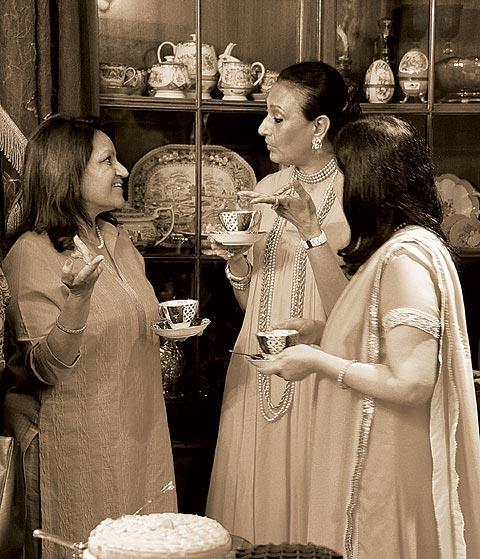
Tea and intimate talks go hand in hand.
(From the book Chai: The Experience of Indian Tea, by Rekha Sarin and Rajan Kapoor; Published by Niyogi Books; Price Rs 1,995)
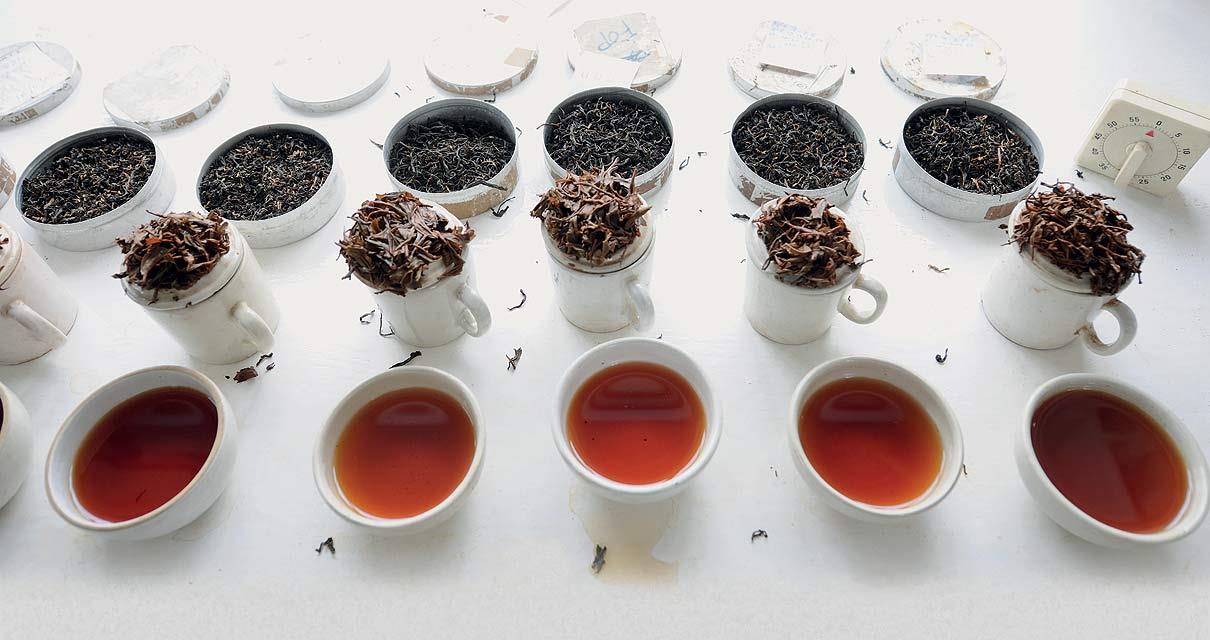
Bold and colourful Assam teas have bright, coppery tones.
(From the book Chai: The Experience of Indian Tea, by Rekha Sarin and Rajan Kapoor; Published by Niyogi Books; Price Rs 1,995)
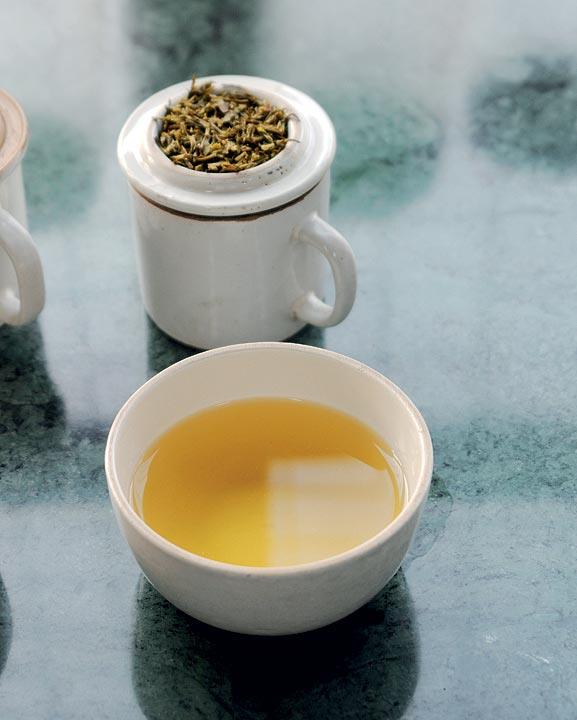
Darjeeling teas release a light liquor when brewed, and each variety has its own inimitable character. Their production is always long leaf Orthodox.
(From the book Chai: The Experience of Indian Tea, by Rekha Sarin and Rajan Kapoor; Published by Niyogi Books; Price Rs 1,995)
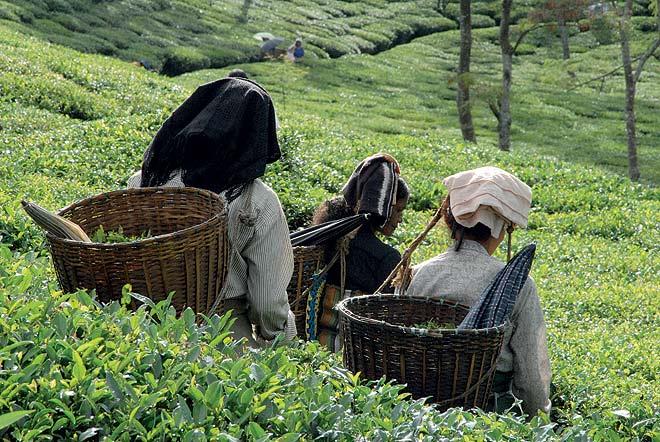
Workers pluck the enigmatic Darjeeling leaf.
(From the book Chai: The Experience of Indian Tea, by Rekha Sarin and Rajan Kapoor; Published by Niyogi Books; Price Rs 1,995)
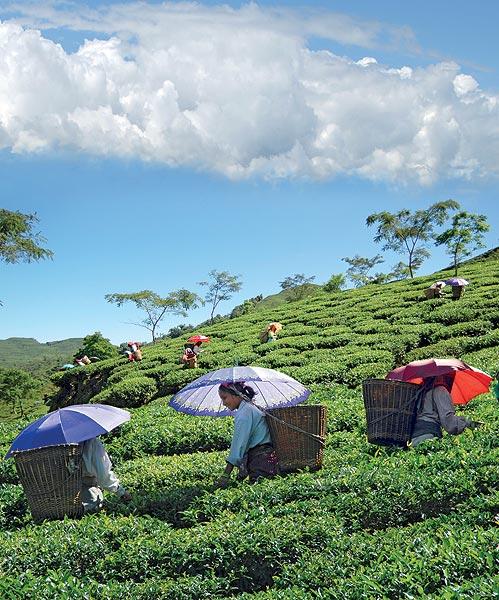
Pluckers navigate the steep terrain under blue summer skies and warm sunshine.
(From the book Chai: The Experience of Indian Tea, by Rekha Sarin and Rajan Kapoor; Published by Niyogi Books; Price Rs 1,995)
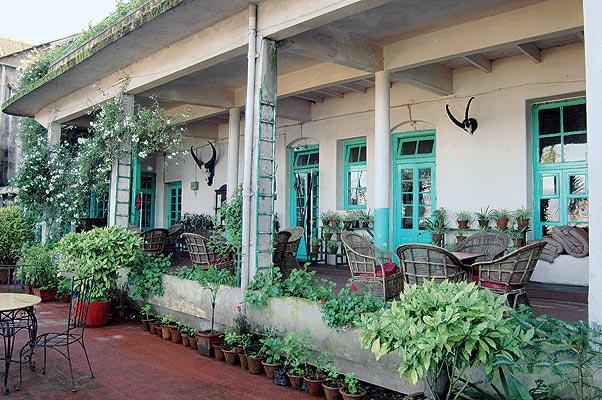
Established in 1868, the Darjeeling Planter's Club was considered the epitome of high society. Its land was donated by the Maharaja of Cooch Behar.
(From the book Chai: The Experience of Indian Tea, by Rekha Sarin and Rajan Kapoor; Published by Niyogi Books; Price Rs 1,995)
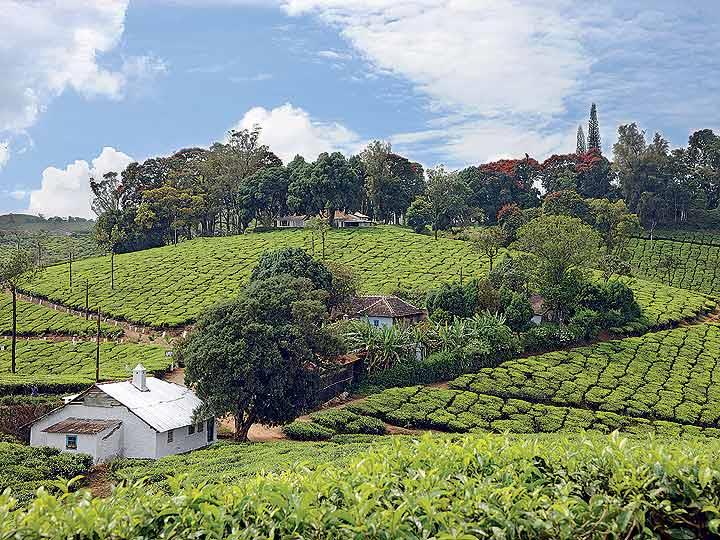
The picturesque Wallardie Tea Estate of Harrisons Malayalam Group produces quality tea with a medium fragrance.
(From the book Chai: The Experience of Indian Tea, by Rekha Sarin and Rajan Kapoor; Published by Niyogi Books; Price Rs 1,995)
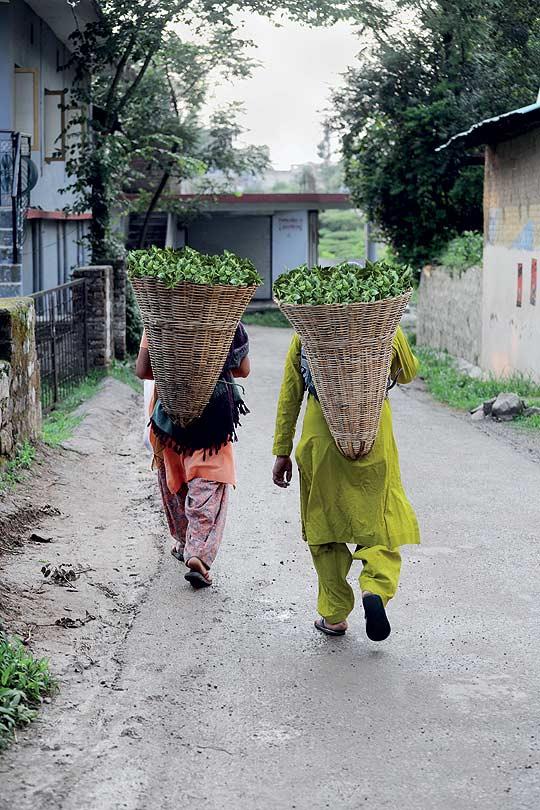
Tea pluckers in Kangra return after a workday. The leaf is sent to the factory co-operatives.
(From the book Chai: The Experience of Indian Tea, by Rekha Sarin and Rajan Kapoor; Published by Niyogi Books; Price Rs 1,995)

Logos of a few private tea companies and estates.
(From the book Chai: The Experience of Indian Tea, by Rekha Sarin and Rajan Kapoor; Published by Niyogi Books; Price Rs 1,995)
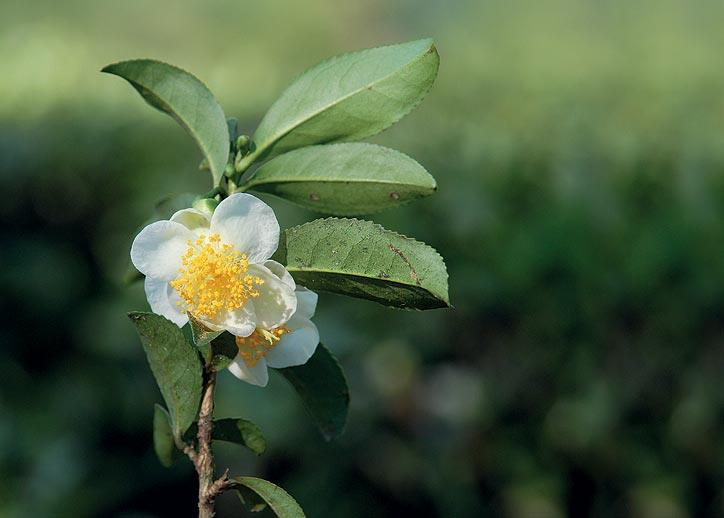
This pretty buttercup-shaped flower is the bloom of the Camellia sinensis, the tea plant. It is rare to see, as the tea bushes are kept consistently pruned to stimulate vigorous new shoots.
(From the book Chai: The Experience of Indian Tea, by Rekha Sarin and Rajan Kapoor; Published by Niyogi Books; Price Rs 1,995)
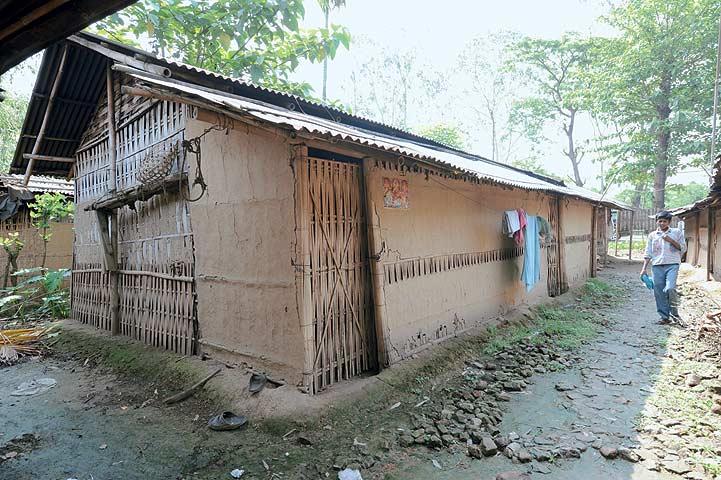
The mud-plastered bamboo dwelling of a tea worker in Assam.
(From the book Chai: The Experience of Indian Tea, by Rekha Sarin and Rajan Kapoor; Published by Niyogi Books; Price Rs 1,995)

Aruna, a plucker at Darjeeling's Goomtee Tea Estate, looks happy and comes to work well-dressed, wearing a large bindi on her forehead.
(From the book Chai: The Experience of Indian Tea, by Rekha Sarin and Rajan Kapoor; Published by Niyogi Books; Price Rs 1,995)
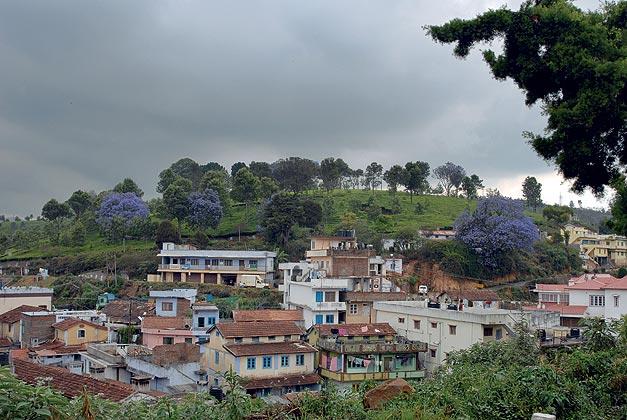
The tea countryside is dotted with little townships, as workers whose contracts in the gardens had expired under the planters, chose to settle down outside.
(From the book Chai: The Experience of Indian Tea, by Rekha Sarin and Rajan Kapoor; Published by Niyogi Books; Price Rs 1,995)
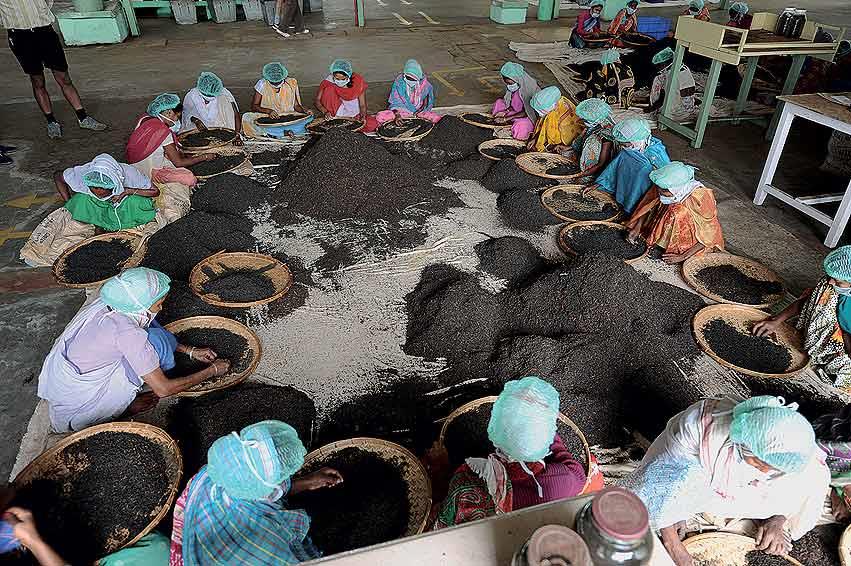
Women at a tea factory in Assam pick out foreign particles and leftover stalks by hand.
(From the book Chai: The Experience of Indian Tea, by Rekha Sarin and Rajan Kapoor; Published by Niyogi Books; Price Rs 1,995)
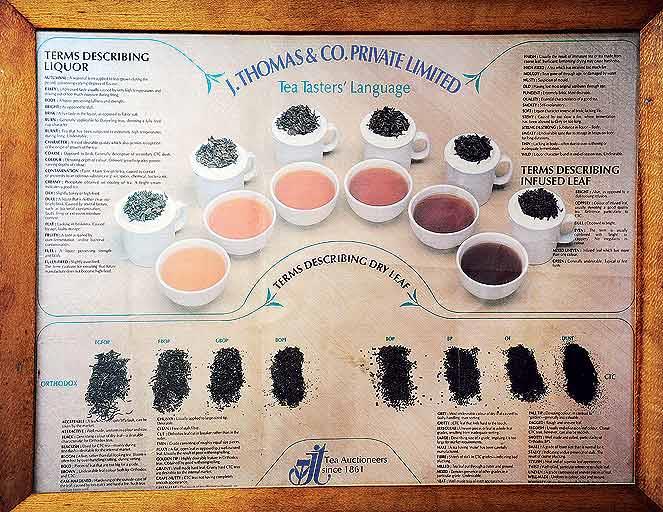
The vocabulary that tea tasters employ to describe their observations resembles the terms used by wine tasters.
(From the book Chai: The Experience of Indian Tea, by Rekha Sarin and Rajan Kapoor; Published by Niyogi Books; Price Rs 1,995)
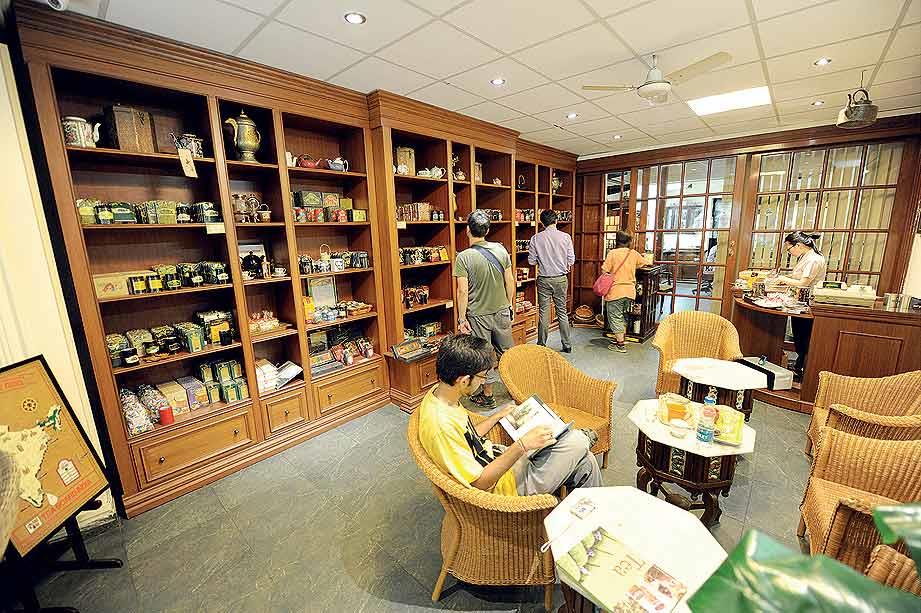
Aap Ki Pasand tea parlour in New Delhi.
(From the book Chai: The Experience of Indian Tea, by Rekha Sarin and Rajan Kapoor; Published by Niyogi Books; Price Rs 1,995)
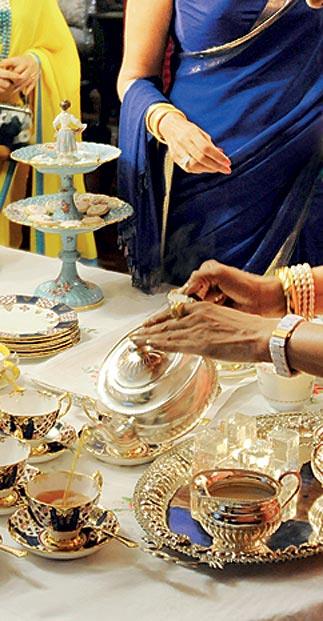
A delicate tea service the western way.
(From the book Chai- The Experience of Indian Tea
Text by Rekha Sarin
Published by-Niyogi Books Price- Rs. 1995)
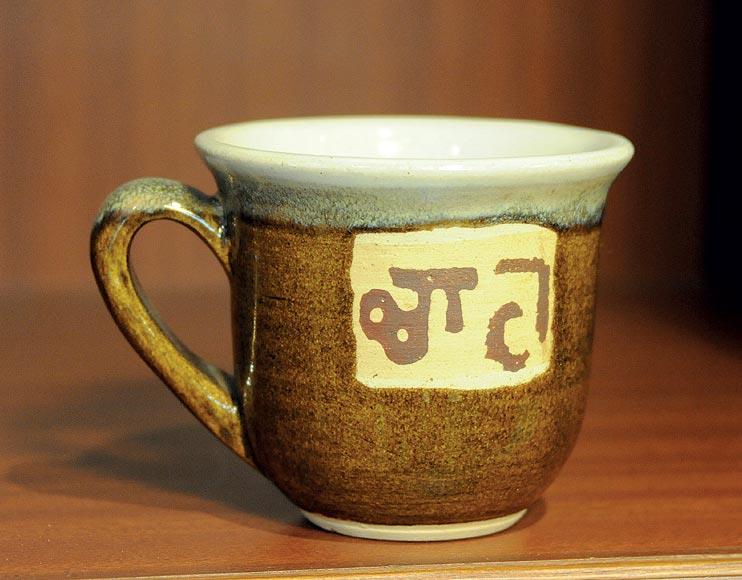
'Chai' written in Gurmukhi, the Punjabi script. Punjab is a region where masala chai is popular, usually taken in a mug or glass.
(From the book Chai: The Experience of Indian Tea, by Rekha Sarin and Rajan Kapoor; Published by Niyogi Books; Price Rs 1,995)
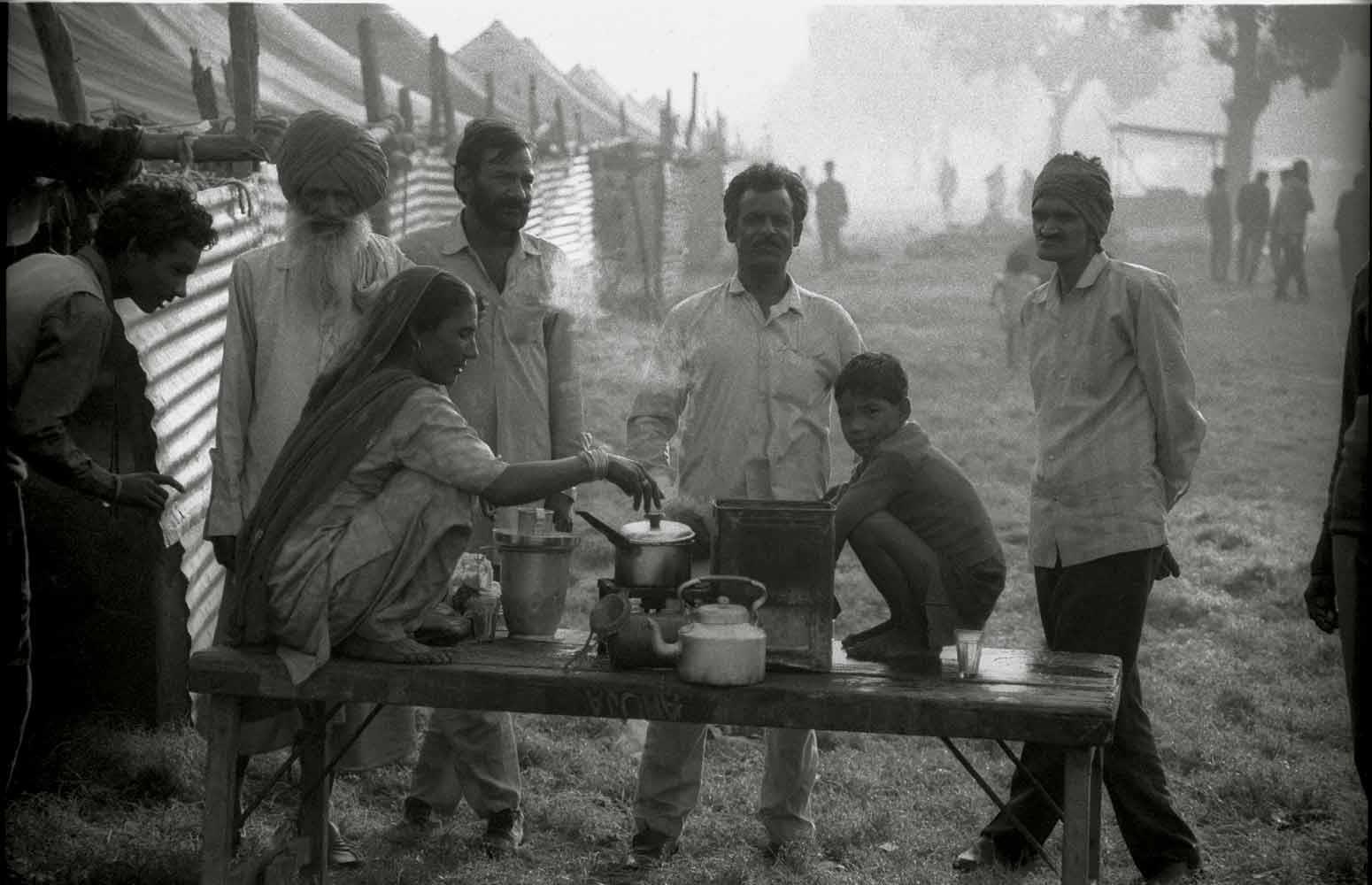
A woman makes chai for male workers before they set out for their morning shift at a tea factory
India
Indian tea
tea

